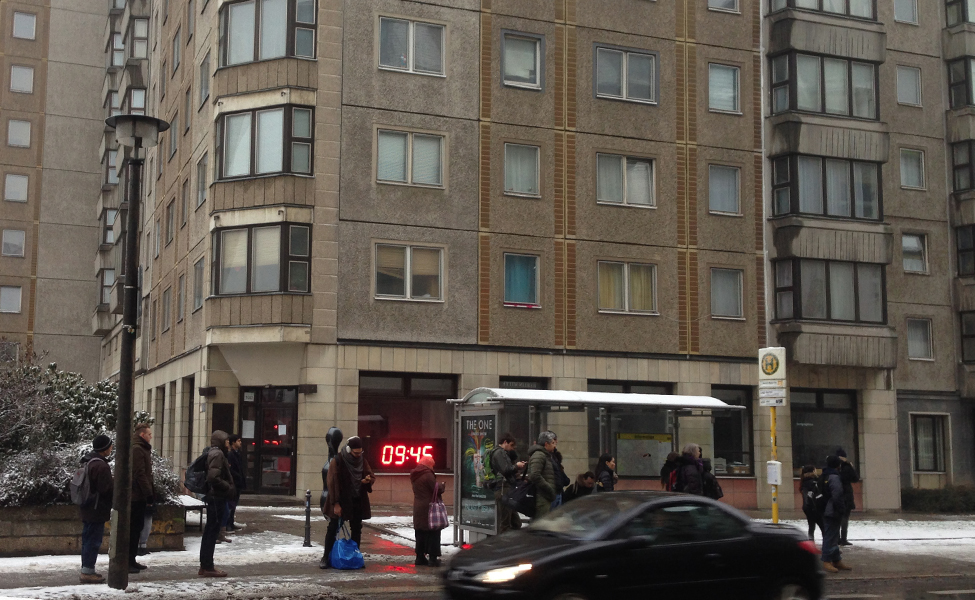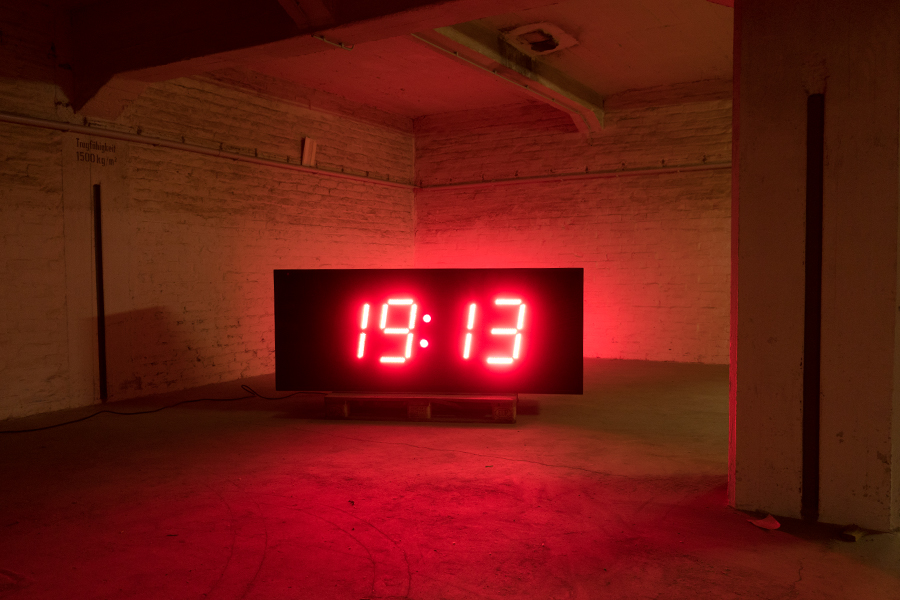On the occasion of the hundredth anniversary of the genocide of Ottoman Christians in 1915, a proposal was submitted to the Turkish intelligentsia for an installation in public space: a memorial apparatus in the form of a digital clock that stops for one hour every day at 19:15 (7:15 PM). The blinking colon marking the seconds goes dark, and the digital numbers become readable as the year of the event that to this day represents the country‘s greatest taboo. Afterward, the clock continues running to display the current year and thus resumes its everyday function. In 2060, the clock will lose its interruption function and will itself pass into memory. In this way, each daily pause protentionally points to its own finite duration and brings questions of historical justice and future responsibility into a situational context.
On June 2, 2016, the German Bundestag officially recognized the Armenian genocide—one hundred years after the crimes and one year after the political standstill. The resolution, which had already been introduced in 2015, was put on ice at that time out of consideration for Turkey. Recognition only came when the diplomatic silence was no longer sustainable. In protest against this stance and against the passing of the hundredth commemorative year without significant change in Turkish memory politics, the handcrafted clock was put into operation in Berlin‘s urban space on the last day of the commemorative year 2015.
The 15th minute of the 19th hour, highlighted in the daily cycle and imbued with symbolic meaning, is—unlike physical monuments—immaterial and thus virtually location-independent. Although its designated place is one where interpretive communities exert restrictive and supra-individual influence, it unfolds its effect wherever its ambiguous semiotics are perceived. The pausing of the memorial clock is a performative act that addresses the individual in their everyday life and personal world of experience as a point of disruption.
Thus emerges an apparatus that—disguised as an everyday timekeeper—ties its memorial function to practical action: What spaces of events and possibilities open up to the immediate and mediate recipient or the community of the moment? This question is renegotiated every day at the same time until 2060.
Anlässlich des hundertsten Gedenktages des Genozids an den osmanischen Christen von 1915 wurde der türkischen Intelligenzija ein Vorschlag für eine Installation im öffentlichen Raum unterbereitet: Eine Erinnerungsapparatur in Form einer digitalen Uhr im Stadtraum, die jeden Tag um 19.15 Uhr eine Stunde lang stehen bleibt. Die Sekundenanzeige des blinkenden Doppelpunktes erlischt und die digitalen Ziffern werden als jene Jahreszahl des Ereignisses lesbar, welches sich bis heute als größtes Tabu des Landes darstellt. Hiernach läuft die Uhr zum Zahlenwert des jeweilig aktuellen Jahres weiter und nimmt somit ihre alltägliche Funktion wieder auf. Im Jahr 2060 verliert die Uhr ihre Unterbrechungsfunktion und wird wiederum selbst in die Erinnerung eingehen. Somit verweisen die täglichen Pausierungen protentional auf ihre Befristetheit und bringen Fragen der historischen Gerechtigkeit und der Zukunftsverantwortung in einen situativen Zusammenhang.
Am 2. Juni 2016 beschloss der Bundestag jene Geschehnisse im Schatten des Ersten Weltkrieges als Genozid anzuerkennen. Zuvor wurde die bereits im April 2015 beschlossene Resolution zur Anerkennung des Völkermords an den Armeniern von den Regierungsfraktionen –aus Rücksicht auf den Partner Türkei– auf Eis gelegt.
Aus Protest gegen diese Haltung und gegen das Versteichen des hundertsten Gedenkjahres ohne nennenswerte Veränderung in der türkischen Erinnerungspolitik, wurde am letzten Tag des Gedenkjahres 2015 die eigenhändig gefertigte Uhr im Stadtraum von Berlin in Betrieb genommen.
Die im Tageszyklus hervorgehobene, werthaft-symbolisch versehene Minute ist im Gegensatz zu gegenständlichen Denkmälern immateriell und somit quasi ortsunabhängig. Gleichwohl ihr Bestimmungsort ein solcher ist, wo Deutungsgemeinschaften anzutreffen sind, die restriktiv und überindividuell wirken, entfaltet sie ihre Wirkung überall dort, wo ihre wechseldeutige Semiotik wahrgenommen wird. Das Pausieren der Erinnerungsuhr ist eine performative Setzung, die als Irritationspunkt das Individuum in seiner Alltäglichkeit sowie persönlichen Erfahrungswelt anspricht. Somit ist eine Apparatur geschaffen, die als Alltags-Taktgeber getarnt, ihre Denkmalsfunktion an praktisches Handeln knüpft: Welche Ereignis- und Möglichkeitsräume öffnen sich dem unmittelbaren und dem mittelbaren Rezipienten oder den „Gemeinschaften des Augenblicks“? Diese Frage wird jeden Tag zur selben Zeit neu verhandelt.
Erinnerungsapparatur, 2015
Stahl, Plexiglas, LED, Elektronik, Lack
200 x 80 x 50 cm

 Potential installation site: İstiklal Caddesi in Istanbul with the Mahnuhr – a clock like any other, until it refuses the rhythm.
Potential installation site: İstiklal Caddesi in Istanbul with the Mahnuhr – a clock like any other, until it refuses the rhythm. 
